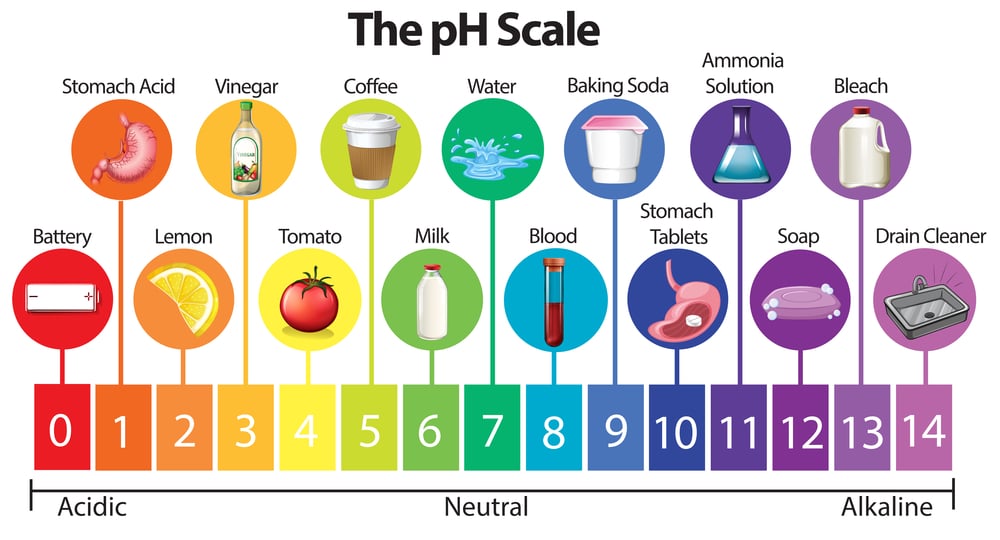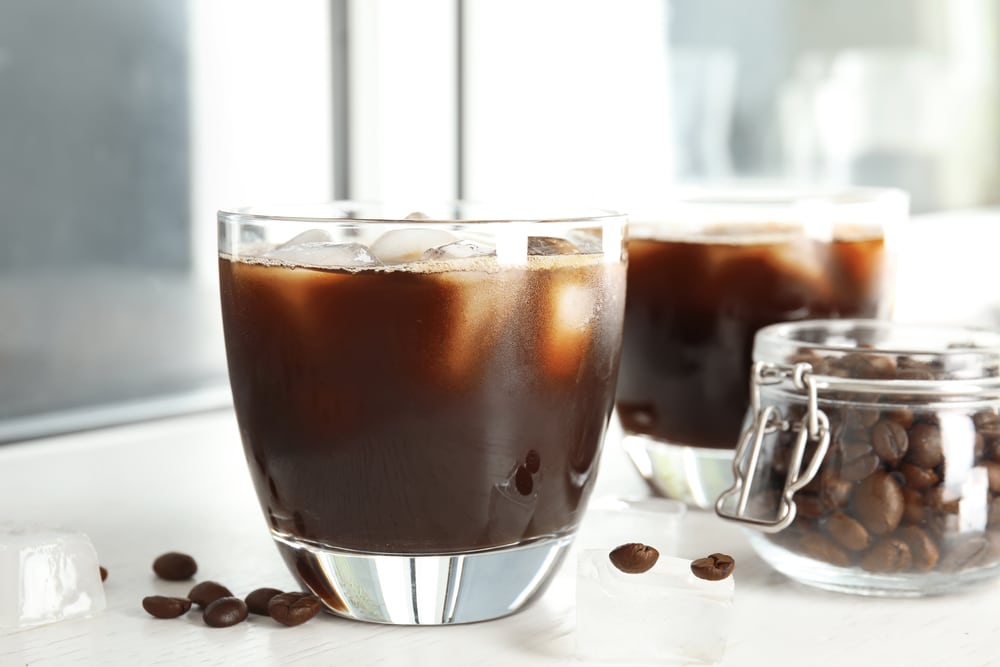Is Cold Brew Less Acidic?

Cold brew coffee stands out for a distinct characteristic that sets it apart from its hot-brewed counterparts: a remarkably lower acidity profile. The allure of a smoother, less acidic cup has propelled cold brew into the limelight, prompting coffee enthusiasts to explore the science and craftsmanship behind this delightful beverage.
What Is Cold Brew Coffee?
Cold brew coffee is a beverage made by steeping coarsely ground coffee beans in cold water for an extended period, usually 12-24 hours. This method produces a smooth, mellow, and slightly sweet coffee with low bitterness and coffee acidity.
Understanding Acidity
When it comes to coffee, acidity is often misunderstood. Coffee acidity primarily refers to the complex flavors perceived as sour or bright, contributing to a lively and interesting taste experience. This concept is distinct from the actual acidity or pH level.
To maintain clarity, we’ll distinguish between the flavor attribute of coffee acidity, which we’ll refer to as “acidic profile” or “coffee acidity,” and the actual acidity measured by pH, which we’ll denote as “pH.”
Coffee Speak: Acidic Profile
In the coffee world, coffee acidity refers to flavors that bring brightness, liveliness, and complexity unrelated to the coffee’s pH level. Varying coffee acidity levels significantly affect the taste, with higher levels creating a tart or tangy flavor and lower levels resulting in a smoother taste. Coffee acidity also balances sweetness and bitterness, creating a well-rounded flavor profile.
These flavors associated with coffee acidity often include crisp, tangy, or fruity notes, enhancing the overall coffee experience. Influencing factors include the bean’s origin, variety, altitude, and processing method. Lighter roasts showcase and preserve natural coffee acidity, and certain regions or varieties, like Ethiopian coffees or high-quality Arabica beans, are known for their pronounced acidic profiles.
Science Speak: pH Levels
In the scientific world, acidity refers to pH level. The pH level measures the acidity or alkalinity of a solution on a scale from 0 to 14. A pH of 7 is considered neutral. If a solution has a pH below 7, it is acidic; if it’s above 7, it is alkaline or basic. The acidity increases as the pH decreases, and conversely, the alkalinity increases as the pH rises. This scale operates logarithmically, signifying that each unit change reflects a tenfold difference in acidity or alkalinity.

Does Cold Brew Have Less Acidity Than Hot Brewed Coffee?
The answer depends on how you define acidity. If you’re talking about the flavor aspect, cold brews typically have a less acidic profile than hot-brewed coffees. However, if you’re considering pH levels, they are generally comparable, as coffee is inherently acidic.
In a Nature Journal investigation titled “Acidity and Antioxidant Activity of Cold Brew Coffee,” researchers analyzed the chemical composition of cold and hot brew coffees made from identical coffee beans and extracted with a consistent water volume-to-grind weight ratio. The findings suggest that the brewing water’s temperature affects the release and distribution of compounds in the final coffee beverage.
Comparing hot and cold brew coffee from the same beans, while their pH values were similar (cold brew 4.96 to 5.13, hot coffee 4.85 to 5.10), titratable acid results revealed substantial differences. Hot coffee had higher titratable acidity, indicating more acids or additional compounds not present in cold brew extracts. Cold brew showed lower concentrations of acidic compounds, suggesting less chemical diversity. Despite comparable pH, the weaker acids in cold brew might make it more stomach-friendly for those with sensitivities.
In a more recent collaborative research project between UC Davis and Toddy LLC titled “Sensory Analysis of Full Immersion Coffee: Cold Brew Is More Floral, and Less Bitter, Sour, and Rubbery Than Hot Brew,” findings determined that per descriptive analysis, cold brew is characterized as less sour, though it may not necessarily have lower acidity from a chemical perspective.
What Contributes To Cold Brew’s Lower Acidic Profile?
The unique brewing process of cold brew contributes to its lower acidic profile. The method involves a slower extraction due to an extended steeping time and colder water temperatures, altering the quantity and types of chemicals extracted from the coffee.
Slow Extraction, Lower Coffee Acidity
The prolonged steeping time in cold brew facilitates a gradual extraction of flavors from the coffee grounds. In contrast to the quick extraction in traditional hot brewing, cold brew’s lengthier duration ensures a gentler dissolution of compounds from the coffee grounds. This slow extraction process is less effective in extracting acids, leading to a brew that inherently possesses lower coffee acidity. Notably, cold brew extracts fewer chlorogenic acids compared to hot brewed coffee. Chlorogenic acid is a key contributor to the acidic profile of coffee, and cold brew extracts less of it in comparison.
The extended steeping time in cold brew introduces the element of controlled oxidation, a distinctive feature not prevalent in traditional hot brewing methods. Unlike the short duration of hot water exposure, cold brew exposes the coffee mixture to air for an extended period, allowing for controlled oxidation. This controlled process can contribute to the reduction of acidity, mellowing out any harsh notes and creating a more stable flavor profile that evolves gracefully over time.
The prolonged brewing time not only influences acidity but also provides a rich opportunity for the coffee grounds to release a diverse spectrum of flavors. The prolonged contact between coffee and water facilitates the extraction of both soluble and insoluble compounds, contributing to a fuller and more nuanced flavor profile in cold brew.
The Impact of Temperature on Coffee Acidity
Understanding the correlation between temperature and acidity is pivotal in comprehending why cold brew coffee is characterized by lower coffee acidity. As water temperature rises, the extraction rate increases. Key chemical compounds responsible for coffee acidity, such as chlorogenic acid, quinic acid, acetic acid, and citric acid, are soluble in hot water. With elevated water temperature, their solubility intensifies, facilitating a more thorough extraction. This is because heat accelerates the movement of molecules in the coffee grounds, enhancing the efficiency and speed of acidic compound extraction.
When coffee is brewed with hot water, it extracts more oils and acids from the beans, resulting in a sharper and more acidic taste. In contrast, the cold brewing process of cold brew extracts fewer acids from the coffee grounds. This leads to a brewing process that is gentler, fostering a more balanced flavor profile in the final brew.

What Effects The Acid Profile Of Coffee?
The acidity levels in coffee are influenced by various factors, from the type of coffee bean to the brewing method. Understanding these factors can help coffee enthusiasts choose beans and methods that align with their flavor preferences. Here are key factors that affect the acid profile of coffee:
Coffee Bean Origin
The region where coffee beans are grown plays a significant role in their coffee acidity. Beans from high-altitude regions, such as those from Ethiopia or Kenya, often exhibit higher coffee acidity due to slower maturation and the presence of specific acids that contribute to bright, fruity flavors. Some well-known low-acid coffee beans are Brazilian, Sumatra, Monsooned Malabar, Peruvian, Mexican, low-grown Colombian, Bali Blue Moon, Ethiopian Sidamo, and Hawaiian Kona.
Coffee Bean Variety
Different coffee bean varieties have distinct flavor profiles, including varying levels of acidity. Arabica beans are generally known for their higher acidity compared to Robusta beans. However, within these broad categories, specific varieties can display unique coffee acidity levels.
Roast Level
The degree of roasting impacts coffee acidity. Lighter roast tends to preserve the natural acidity of the beans, allowing fruity and floral notes to shine. As roasting progresses, coffee acidity diminishes, and flavors shift towards more caramelized and chocolatey notes.
Altitude of Growth
Coffee plants cultivated at higher altitudes generally experience cooler temperatures and slower maturation. This slower growth can result in beans with higher coffee acidity levels, as the extended development allows for the accumulation of more complex acids in the coffee cherries.
Processing Methods
The method used to process coffee beans after harvesting can influence coffee acidity. Wet processing (washing) often yields beans with brighter acidity, while dry processing (natural or sun-dried) can produce beans with a fruitier, wine-like acidity. The processing method affects how acids are developed and retained in the beans.
Brewing Time and Temperature
The brewing method, time, and temperature have a significant impact on coffee acidity. Shorter brewing times and lower temperatures, as seen in cold brew coffees, often result in a beverage with reduced coffee acidity. Conversely, steeping ground coffee beans quickly and at higher temperatures, such as in espresso, can extract more acids, contributing to a sharper taste.
Grind Size
The grind size of coffee beans affects the extraction process. Finer grinds can lead to over-extraction, potentially extracting more bitter compounds and acids, resulting in a brew with higher perceived coffee acidity. Coarser grinds, like that used in cold brew, can produce a milder cup.
Water Quality
The quality and composition of the water used for brewing can impact coffee acidity. Water that is too hard or too soft may affect the extraction process and alter the perceived acidity of the coffee. Balanced water is essential for achieving optimal flavor.
Age of Coffee Beans
The freshness of coffee beans also plays a role. As coffee beans age, they undergo chemical changes, and the acidity may diminish. Freshly roasted beans are more likely to retain their vibrant acidity.
Type of Brewing Equipment
The type of brewing equipment used can influence acidity. For example, brewing methods that use paper filters, like pour-over or drip brewing, may result in a cleaner cup with reduced oils and acidity compared to methods like French press, which allows more oils and compounds to pass through.
Benefits Of Cold Brew Having a Lower Acidic Profile
While cold brew may not have a significantly lower pH than its hot brewed counterparts, it does contain fewer titratable acids, which can be harsh on the stomach. This makes it a more suitable option for individuals with digestive issues or sensitivities like acid reflux. The milder taste of less acidic coffee allows the natural flavors of the beans to shine through, providing a more enjoyable experience for individuals with sensitive palates who might find highly acidic coffees too intense or bitter.

Frequently Asked Questions
Why Is Cold Brew Easier On The Stomach?
While cold brew has a pH similar to hot brew, its slow and cold extraction reduces bitter compounds, making it gentler on digestion. It has fewer titratable acids, making it more stomach-friendly for those with sensitivities. Cold brew also extracts fewer oils, reducing irritation. Though many find its milder flavor easier on the stomach, individual responses vary.
Is Cold Brew Better For Gastroesophageal Reflux Disease (GERD) And Irritable Bowel Syndrome (IBS)?
Cold brew coffee is often deemed more appropriate for people with Gastroesophageal Reflux Disease (GERD) and Irritable Bowel Syndrome (IBS) because it contains fewer titratable acids and boasts a milder flavor. The lower concentration of titratable acids may reduce the chances of symptoms triggering. Nonetheless, individual reactions differ, and it’s crucial to exercise moderation.
Is Cold Brew Less Acidic For Teeth?
The acidity in beverages can affect dental health, and it’s important to understand that both hot and cold brewed coffee are generally acidic. Although cold brew is often perceived as having a less acidic profile, its pH levels are comparable to those of hot brew coffee. Consequently, both hot and cold brews may have similar effects on teeth in terms of acidity. The specific impacts of consuming cold brew coffee on dental health have not been extensively studied, and individual responses may vary.
Mary is a writer at Caffe Streets. She works in the healthcare field and finds pleasure in learning, researching, and sharing coffee-related information with coffee enthusiasts worldwide. Her coffee of choice is the affogato, a beverage/dessert she deems simply perfection.





